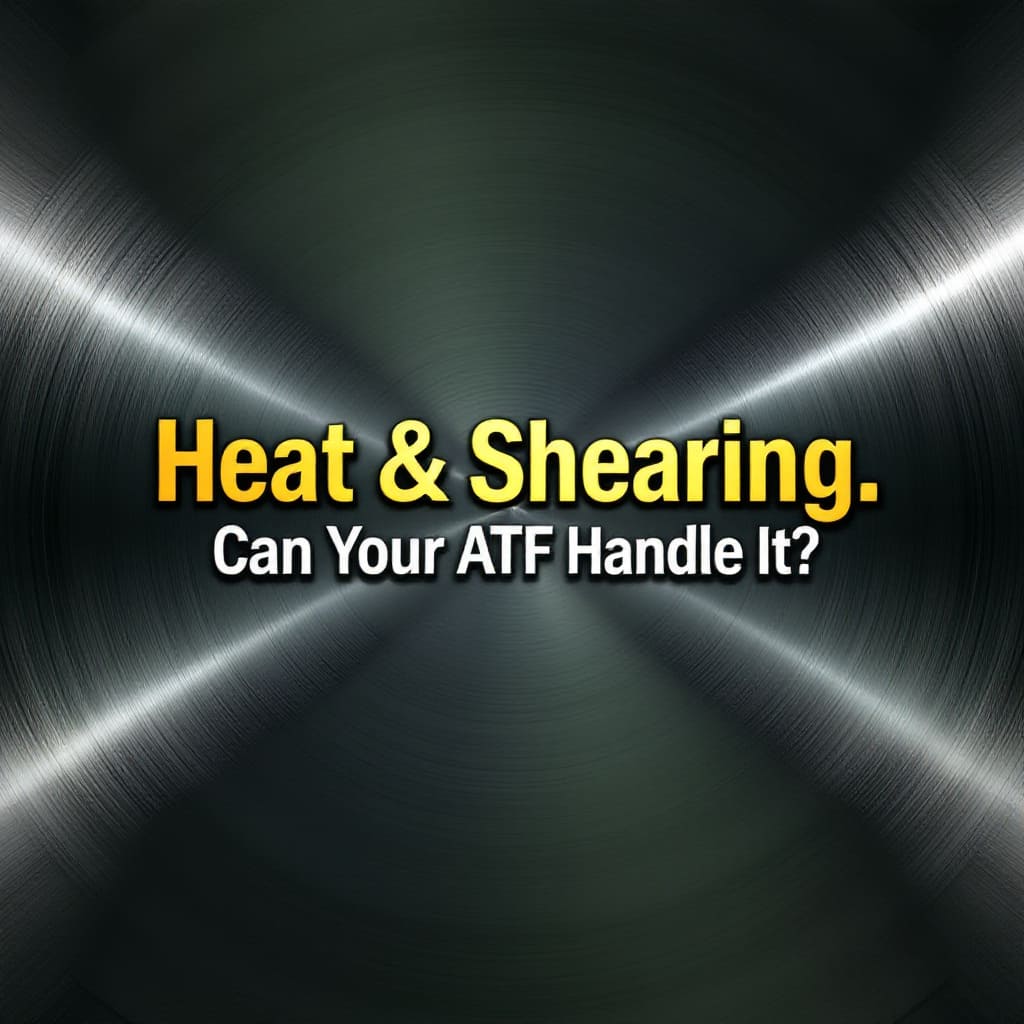The Powerglide transmission has earned its place as a motorsport icon because of its simplicity, durability, and consistent performance. Introduced by General Motors in the early 1950s, this two-speed automatic evolved from a street-car unit into a mainstay of drag racing, dirt track competition, and other high-performance applications.
While its design has remained straightforward, modern upgrades and advanced transmission fluids have kept it competitive under today’s racing demands.
This guide examines the unique traits of the Powerglide, the critical role transmission fluid plays in performance, and the leading fluid choices that meet the severe conditions of motorsport.
Historical Context: The Evolution of the Powerglide
The Powerglide debuted in 1950 as a cast-iron unit built for Chevrolet passenger cars. By the 1960s, General Motors had introduced an aluminum housing that cut weight substantially, making the transmission far more appealing to racers.
Its two-speed simplicity quickly made it a fixture in drag racing, where consistent launches mattered more than multiple gear ratios. Over time, aftermarket cases, lightweight converters, and precision internals kept the Powerglide relevant not only in straight-line racing but also in off-road and dirt track competition. For detailed insights into the performance capabilities and history of the Powerglide, visit this article on Hot Rod.
The Unique Characteristics of the Powerglide
The Powerglide’s lightweight construction is one of its strongest assets. The aluminum case weighs far less than modern multi-speed automatics, reducing overall vehicle mass and helping racers achieve quicker acceleration and higher speeds.
Durability is another defining quality. Properly reinforced, a Powerglide can handle in excess of 1,000 horsepower without failing, giving it a reputation as one of the most resilient transmissions for drag racing.
Performance consistency is equally critical. Its direct hydraulic operation and simple gearset remove many variables, which allows for predictable launches and reliable shift behavior under time-sensitive racing conditions.
Finally, the aftermarket support for the Powerglide ensures adaptability. With options like trans-brakes, billet valve bodies, and precision clutch packs, builders can tailor the transmission to drag strips, dirt tracks, or off-road environments without sacrificing reliability.
The Essential Role of Transmission Fluid in the Powerglide
Transmission fluid does far more than lubricate. In the Powerglide, it creates a protective film that prevents metal-on-metal contact between clutches, gears, and bearings, reducing friction and wear even under racing loads.
Heat management is just as vital. Repeated launches and prolonged runs generate enormous thermal stress, and a properly formulated fluid absorbs and dissipates this heat, preventing warping, seal damage, and premature breakdown.
Friction control defines whether shifts are repeatable or erratic. Racing fluids regulate clutch engagement, reduce slip, and allow precise shifts under heavy torque, which is essential when fractions of a second determine outcomes.

High-stall torque converters in racing Powerglides subject transmission fluid to extreme shear forces that can quickly thin out weaker formulations. When viscosity collapses, hydraulic pressure drops, causing erratic line integrity and inconsistent shift timing. Fluids with proven shear stability maintain thickness under these loads, which preserves clutch engagement and keeps launch performance repeatable.
Oxidation accelerates with rising heat: Repeated passes can push Powerglide ATF temperatures past 200–250 °F, where chemical breakdown speeds up dramatically. For every 18 °F (10 °C) increase, oxidation rates roughly double, meaning a fluid that endures fifty passes at 220 °F may survive only twenty-five at 238 °F. This relationship shows why small gains in cooling can make a big difference in fluid life and gearbox reliability.
Film strength must balance with friction: Racing Powerglides demand fluids strong enough to maintain a protective film on gears, bearings, and bushings under extreme torque loads. At the same time, the chemistry must permit clutch packs to bite sharply without slipping, which requires precise friction control. This balance directly affects launch consistency, making it one of the most critical factors in fluid design for competitive drag racing.
Cold-flow readiness shapes race prep: Drag cars often sit overnight, then fire up cold and reach full load within minutes, which puts stress on fluid flow at startup. Brookfield low-temperature viscosity and viscosity index (VI) values show whether a fluid can circulate quickly while still maintaining thickness at operating heat. Fluids with strong cold-flow and high viscosity index prevent cavitation, delayed engagement, and hydraulic lag right at the starting line.
Foam control preserves line pressure: At over 7,000 rpm, a Powerglide churns fluid aggressively, especially in shallow pans or systems with undersized coolers. When air mixes with the ATF, aeration lowers hydraulic pressure, which leads to erratic shift timing and lost consistency. Fluids with strong anti-foam and rapid air release characteristics maintain stable pressure, keeping race launches predictable.
Wear tests go beyond Four-Ball scars: While the 0.35 mm scar measurement highlights resistance to surface wear, racing professionals often look for broader test data. The FZG gear test measures how fluids protect under progressive torque loading, while High-Temperature High-Shear (HTHS) results show viscosity retention under severe stress. While not an official ATF test, Four-Ball wear data provides comparative insight into film strength under sliding contact. This test is adapted from engine oils, but provides comparative insight into boundary film strength. Referencing these methods gives added context on how fluids endure real racing loads beyond basic wear scoring.
Heat paths are unique in Powerglides: Unlike modern multi-gear automatics, the Powerglide’s simple two-speed design concentrates heat heavily in the clutch pack and planetary carrier. These components absorb the brunt of thermal stress during launches, making fluid circulation and cooling efficiency critical to survival. Understanding where heat forms and how fluid removes it provides system-level insight that generic ATF discussions often overlook.
Protective additives round out the package. Anti-oxidation, anti-foam, and anti-wear chemistry preserve fluid integrity in extreme conditions, extending both fluid life and component protection.
After decades around drag cars and race shops, I can tell you that picking transmission fluid isn’t any different than spec’ing the right cam profile for a muscle car build. Sure, you can drop in a cheap cam and it’ll run, but under heat and load the wrong grind will wipe lobes and lose power. Fluids work the same way — viscosity stability and additive chemistry are the hidden grind, the part you don’t see, but they decide whether your Powerglide holds line pressure and delivers repeatable launches or fades halfway through the season.
Comparing High-Quality Transmission Fluids
Selecting the right transmission fluid is central to the Powerglide’s success on the track. Racing conditions subject the fluid to far higher heat, load, and shear than normal use, which makes standard ATF inadequate.
AMSOIL Super Shift Synthetic Racing Transmission Fluid is specifically engineered for high-horsepower, high-torque applications. Its formulation provides resistance to heat and oxidation while offering high holding capacity to reduce slippage under load. Shear-stable base oils prevent viscosity loss, and its tested wear protection demonstrates durability, with a Four-Ball Wear scar of 0.35 mm under ASTM D4172B. This makes it particularly effective for drag racing, monster trucks, and hot rods.
Driven Racing Oil Racing ATF is designed to deliver consistent clutch performance under repeated passes. Its friction stability supports predictable engagement, while strong temperature control helps minimize fade during extended use. Racers who require repeatable shifts in drag competition find this formulation suited to their demands.
Red Line Racing ATF addresses the extreme pressure and heat often found in racing. Its high viscosity index ensures stable response across both hot and cooler ranges, while shear stability resists thinning under heavy torque. By reducing slip, it extends clutch life and maintains hydraulic reliability during long or repeated runs.
Each of these fluids brings distinct strengths. AMSOIL Super Shift excels in torque-heavy, high-temperature drag racing environments. Driven Racing ATF provides stable friction control for racers who value precise clutch behavior. Red Line Racing ATF offers durability across a wide thermal spectrum, making it effective for heavy-duty competition.
Key Factors to Consider When Choosing Transmission Fluid
Viscosity and heat resistance cannot be overlooked. Racing fluids must maintain consistent thickness under extreme heat, or hydraulic pressure will falter, leading to erratic performance and premature wear.
Additive chemistry determines whether a fluid can endure the severe shock loads of drag launches. Anti-foam, anti-wear, and oxidation inhibitors are essential for keeping gears, clutches, and bearings protected under high strain.
Compatibility with performance components is equally important. Builders who install billet valve bodies, turbo shafts, or high-stall converters must ensure the chosen fluid works harmoniously with these modifications to avoid accelerated wear.
Maintenance requirements also change in competition. Fluids degrade faster under racing conditions than in street use, and shorter service intervals are necessary to preserve reliability.
Maintenance and Fluid Replacement Intervals
Regular fluid replacement is critical for keeping a Powerglide in peak operating condition. Builders generally recommend changing fluid every 25–50 passes, though the exact interval can vary depending on horsepower levels and application.
Monitoring condition is equally important. Signs such as darkened fluid, burnt odors, or unusual texture reveal oxidation or breakdown, all of which demand immediate attention before component damage occurs.
Additional steps help extend transmission life. An external cooler is invaluable in managing fluid temperature during repeated passes, and pairing every fluid change with a new filter ensures contaminants are removed before they can cause harm.
Frequently Asked Questions
1. Can regular ATF be used in a racing Powerglide? Standard ATF may be suitable for street-driven units, but it does not offer the thermal resistance or friction stability needed under racing loads. Racing-specific fluids such as AMSOIL Super Shift, Driven Racing ATF, and Red Line Racing ATF are formulated for the extreme temperatures and stresses of motorsport.
2. Do racing transmission fluids work with aftermarket modifications? Yes. High-quality racing ATFs are formulated to remain stable with billet drums, high-stall converters, and trans-brakes, all of which place exceptional stress on fluid stability. Final confirmation should come from the builder who set up the transmission, since clearances and components vary by application.
3. How can transmission fluid life be extended under racing conditions? Routine inspection, frequent fluid and filter changes, and the addition of an external cooler all make a measurable difference. Using a fluid designed for high-horsepower, high-heat applications—such as AMSOIL Super Shift—adds further protection against slippage, wear, and thermal breakdown.
Conclusion: Making an Educated Choice for Your Powerglide
The Powerglide has proven its value as one of racing’s most durable and consistent transmissions, but its performance depends heavily on the quality of its fluid. Racing formulations like AMSOIL Super Shift, Driven Racing ATF, and Red Line Racing ATF each provide technical advantages that align with different racing needs, from torque management to thermal stability.
By choosing a fluid designed for high-stress use and maintaining strict service practices, racers can ensure their Powerglide delivers consistent results and long-term reliability. In motorsport, where every detail matters, transmission fluid is not a commodity—it is a performance component.
